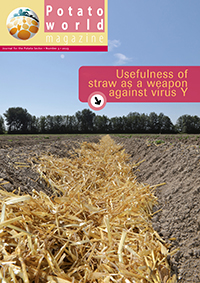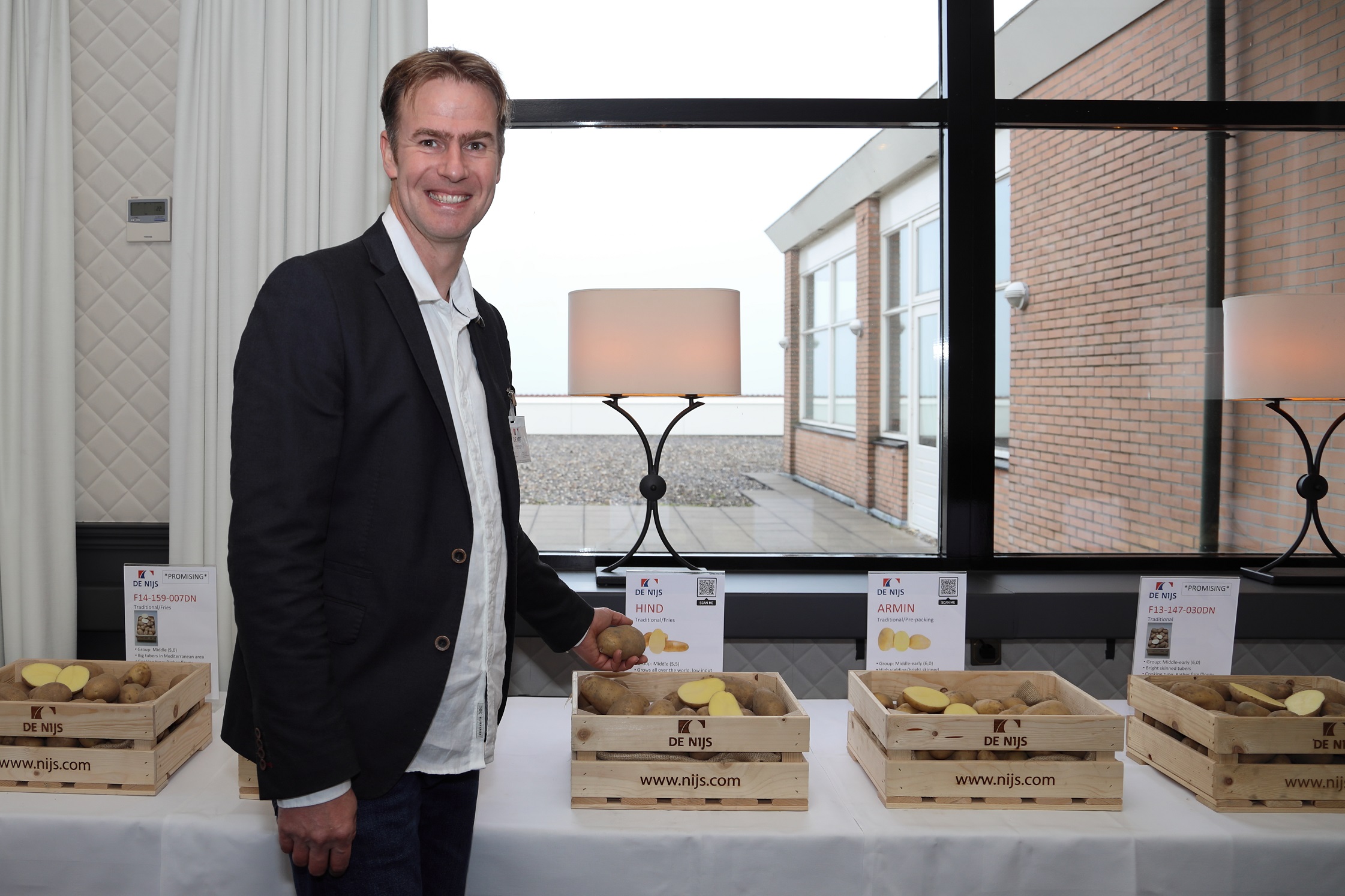Already a subscriber? Activate your premium account

Potatoworld Magazine

During the Potato Variety Days 2021, we asked participating breeding companies about the key focus of their breeders in their search for new varieties. In this blog post you may read the answer given by Jan-Paul Bandsma, Product Manager at De Nijs Potatoes, Warmenhuizen (NL):
The content of this blog originates from the article on the Potato Variety Days 2021 published in PotatoWorld magazine 2022/01.
By Zindziwe Janse, Jaap Delleman and Leo Hanse.
‘The fact that the number of pesticides allowed in agriculture is decreasing across Europe is a challenge for many growers and trading companies’, says Jan-Paul Bandsma, Product Manager at De Nijs Potatoes. ‘Also, in the case of overseas export, companies we work with want varieties that are heat and drought tolerant. Robustness is therefore becoming increasingly important. It just all has to be stronger, resistant to viruses, soil-bound diseases, potato cyst nematodes, etcetera.’
‘I believe that everything can be done even more sustainably, which is why we’re also working on those robust varieties. Moreover, last year, I heard that even very resistant varieties got into problems because of the high Phytophthora pressure after all. I think we should strive to maintain Phytophthora resistance for longer’, ‘You also need to find out what is in demand. And if I ask for something from breeders in 2021, it will hopefully be on the market somewhere in 2031. You have to have a crystal ball in front of you, so to speak, and then be lucky enough to find the right crossing for your specific purpose’, says the Product Manager. ‘One variety that demonstrates our focus in breeding is the Hind, for which we have a lot of demand at the moment. The remarkable thing is that this variety actually grows wherever you put it. With a new variety, the trick is also to inform the growers how to handle it. If you come to a grower with a new variety, there will be teething problems. Developing a variety isn’t very difficult in itself, but selling it is a different skill. An advantage of the Hind is also that it needs very little nitrogen. That’s already quite a bit of robustness and durability. The variety has a very good root system and, if you then see that in areas that need irrigation, for example, the Spunta needs one irrigation round more than the Hind, you can still persuade people and introduce a new variety. It’s always a kind of puzzle process that you’re in. Is the customer open to it? You always need to check that out. So there’s definitely plenty of challenge’, he concludes.
Want to keep reading about the Potato Variety Days?
In the run-up to the event we published an e-book that you can download here!
Events
©2015 - 2024 Potatoworld | Webdesign and realisation COMMPRO